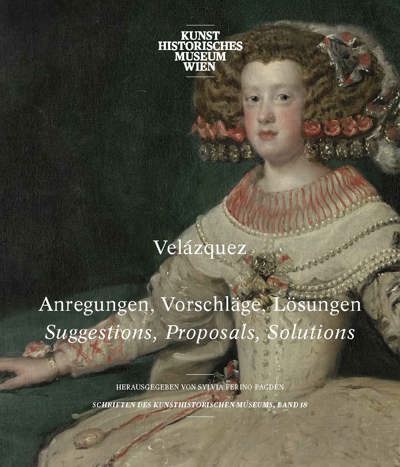
Velázquez: Anregungen, Vorschläge, Lösungen
Suggestions, Proposals, Solutions
Sylvia Ferino-Pagden (ed)
- Pages: 196 p.
- Size:240 x 280 mm
- Illustrations:11 b/w, 98 col.
- Language(s):German, English, Italian
- Publication Year:2019
- € 50,00 EXCL. VAT RETAIL PRICE
- ISBN: 978-3-99020-155-8
- Paperback
- Available
A thematically and methodologically diverse collection of papers on the work of Diego Velázquez presented on occasion of the seminal exhibition of the artist’s oeuvre at the Kunsthistorisches Museum in Vienna.
Encompassing a broad spectrum of methodological approaches and aims, the scholars contributing to this volume offer renewed perspectives on the multifaceted oeuvre of Diego Velázquez. The seventeenth-century artist’s exceptional religious works as well as his numerous portraits are examined within the social and historical context of Velázquez’s milieu which included both the Spanish court as well as circles comprising important intellectual figures of his time. Following a close investigation of his works, which also includes the results of recent technological examinations on his paintings, the contributors to this volume offer new, exciting findings and discussions on the inspirations, sources and possible intentions of Velázquez.
Vorwort/Introduction — Sylvia Ferino-Pagden
Velázquez’ religiöse Gemälde. Kunst und Religion am Hof von Madrid — Gabriele Finaldi
‘Republicans of letters and sciences’: some Velázquez portraits — Fernando Marías
»Einer der nur Köpfe malen konnte« – Velázquez’ Karriere am Hof Philipps IV. — Karin Hellwig
Camuffamenti in Velázquez — Roberto Contini
Augenpfade zur Bildnismalerei von Velázquez — Andreas Prater
Velázquez: A portrait of Pope Innocent X. The historical context (I) — Stefan Albl
Velázquez?: A portrait of Pope Innocent X. An X-ray imaging investigation (II) — Frederik Vanmeert & Geert van der Snickt & Stijn Legrand & Koen Janssens
Serie, Paraphrase, Kopie: Diego Velázquez und Frans Luycx als Porträtisten der Casa de Austria — Friedrich Polleroß
»Las Meninas« von Diego Velázquez – des Rätsels Lösung — Martina Pippal




